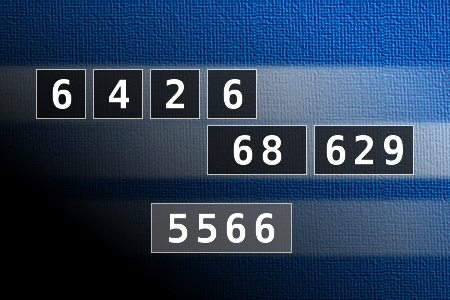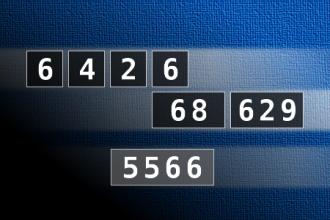Calculate the number 5566
NUMBERMANIA: Calculate the number 5566 using numbers [6, 4, 2, 6, 68, 629] and basic arithmetic operations (+, -, *, /). Each of the numbers can be used only once.Correct answers: 13
The first user who solved this task is Nílton Corrêa de Sousa.
#brainteasers #math #numbermania

A local business was looking f...
A local business was looking for office help. They put a sign in the window saying:
"HELP WANTED. Must be able to type, must be good with a computer and must be bilingual. We are an Equal Opportunity Employer."
A short time afterwards, a dog trotted up to the window, saw the sign and went inside. He looked at the receptionist and wagged his tail, then walked over to the sign, looked at it and whined.
Getting the idea, the receptionist got the office manager. The office manager looked at the dog and was surprised, to say the least. However, the dog looked determined, so he led him into the office. Inside, the dog jumped up on the chair and stared at the manager.
The manager said, "I can't hire you. The sign says you have to be able to type."
The dog jumped down, went to the typewriter and proceeded to type out a perfect letter. He took out the page and trotted over to the manager and gave it to him, then jumped back on the chair.
The manager was stunned, but then told the dog, "The sign says you have to be good with a computer."
The dog jumped down again and went to the computer. The dog proceeded to demonstrate his expertise with various programs and produced a sample spreadsheet and database and presented them to the manager.
By this time the manager was totally dumbfounded! He looked at the dog and said, "I realize that you are a very intelligent dog and have some interesting abilities. However, I still can't give you the job."
The dog jumped down and went to a copy of the sign and put his paw on the part about being an Equal Opportunity Employer.
The manager said, "Yes, but the sign also says that you have to be bilingual."
The dog looked at him straight in the face and said, "Meow."
"HELP WANTED. Must be able to type, must be good with a computer and must be bilingual. We are an Equal Opportunity Employer."
A short time afterwards, a dog trotted up to the window, saw the sign and went inside. He looked at the receptionist and wagged his tail, then walked over to the sign, looked at it and whined.
Getting the idea, the receptionist got the office manager. The office manager looked at the dog and was surprised, to say the least. However, the dog looked determined, so he led him into the office. Inside, the dog jumped up on the chair and stared at the manager.
The manager said, "I can't hire you. The sign says you have to be able to type."
The dog jumped down, went to the typewriter and proceeded to type out a perfect letter. He took out the page and trotted over to the manager and gave it to him, then jumped back on the chair.
The manager was stunned, but then told the dog, "The sign says you have to be good with a computer."
The dog jumped down again and went to the computer. The dog proceeded to demonstrate his expertise with various programs and produced a sample spreadsheet and database and presented them to the manager.
By this time the manager was totally dumbfounded! He looked at the dog and said, "I realize that you are a very intelligent dog and have some interesting abilities. However, I still can't give you the job."
The dog jumped down and went to a copy of the sign and put his paw on the part about being an Equal Opportunity Employer.
The manager said, "Yes, but the sign also says that you have to be bilingual."
The dog looked at him straight in the face and said, "Meow."

